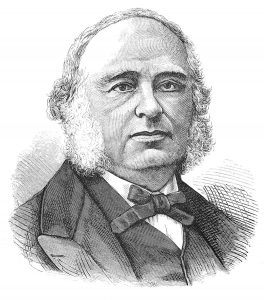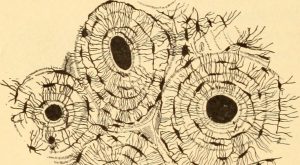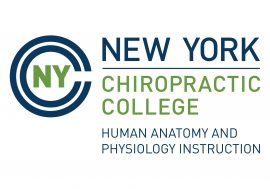00:43 | What is an Eponym?
06:16 | Sponsored by HAPS
06:57 | Modern Use of Eponyms
16:26 | Sponsored by AAA
17:16 | Another Problem with Eponyms
22:01 | Sponsored by HAPI Online Graduate Program
22:34 | How to Deal with Eponyms in Our A&P Course
If you cannot see or activate the audio player click here.
Questions & Feedback: 1-833-LION-DEN (1-833-546-6336)
Follow The A&P Professor on Twitter, Facebook, Blogger, Nuzzel, Tumblr, or Instagram!
The least questioned assumptions are often the most questionable. (Pierre Paul Broca)
1 | What is an Eponym?
5.5 minutes
An eponym is a term named after a person. A toponym is named for a place.
- What is an Eponym (Kevin's blog post, includes links to other resources) my-ap.us/2uaLU3V
- Who Named It? (website listing eponym sources) www.whonamedit.com/
- Paul Langerhans (brief bio) my-ap.us/2CDJtMl
- Friederich Gustave Jakob Henle (wiki article) my-ap.us/2CuU3Ft
- The Duffy blood group (book chaper) my-ap.us/2CzAnjP
- Legionnaires Disease (CDC resource) my-ap.us/2CzqbHO
2 | Sponsored by HAPS
0.5 minute
The Human Anatomy & Physiology Society (HAPS) is a sponsor of this podcast. Did you know there's a one-day regional HAPS conference in March? Check it out. You can help appreciate their support by clicking the link below and checking out the many resources and benefits found there.
3 | Modern Use of Eponyms
9.5 minutes
Eponyms are going out of fashion. For some very good reasons. When we do use them, there are some common practices that A&P teachers should pay attention to.
- This segment features Seven Fashion Tips for Stylish Use of Eponyms
- Avoid eponyms
- Be bilingual
- If you have to use an eponym, do
- Fashionable non-possessive forms
- Back-door eponym styles (non-capitalized adjectives)
- Fashion rules are not really rules
- OK, sometimes fashion rules really are rules
- Modern Use of Eponyms (Kevin's blog post, includes those 7 fashion tips and links to other resources!) my-ap.us/2ubbqWI
- What's Up with Eponyms in A&P? Part 1 (Kevin's blog post) my-ap.us/2UNrCcS
- International Lists: A Practical Approach for Your A&P Course (resource in The A&P Professor website with links to the international lists of anatomical terminology) my-ap.us/2uw6jBu
- Patton Glacier (yep, it's a real thing) my-ap.us/2UR9mzih
4 | Sponsored by AAA
1 minute
The searchable transcript for this episode, as well as the captioned audiogram of this episode, are sponsored by The American Association of Anatomists (AAA) at anatomy.org. Their big meeting is in April at the Experimental Biology (EB) meeting in Orlando FL. Check it out!
5 | Another Problem with Eponyms
4.5 minutes
There are some historical and social controversies surrounding many eponyms. This begs the question: why should we continue to use them?
- What's Up with Eponyms in A&P? Part 2 (Kevin's blog post) my-ap.us/2UTD06W
- Asperger's Children: The Origins of Autism in Nazi Vienna (book) amzn.to/2JAmjMS
- The Nazi Anatomists – A Conversation with Aaron Fried | Episode 30 (addresses some of the ethical issues surrounding Nazi connections)
- Did A Soviet Psychiatrist Discover Autism In 1925? (article about Grunya Efimovna) my-ap.us/2CuWVSL
- What's in a name? Gender and the eponym (journal article) my-ap.us/2CC4I0X
- The case for renaming women's body parts (article in the popular press) my-ap.us/2CL6xcj
- The Anatomy Education Podcast #42: Dr. Leah Kaminsky (conversation with the author of the article) my-ap.us/2CAkTMa
6 | Sponsored by HAPI Online Graduate Program
0.5 minutes
The Master of Science in Human Anatomy & Physiology Instruction—the MS-HAPI—is graduate program for A&P teachers. A combination of science courses (enough to qualify you to teach at the college level) and courses in instructional practice, this program helps you power up your teaching. Kevin Patton is a faculty member in this program. Check it out!
7 | How to Deal with Eponyms in Our A&P Course
3.5 minutes
Eponyms may be best left behind, but sometimes we can't avoid them. How do we emphasize the pitfalls of eponym use with students who will certainly face the lingering use of them in professional settings? Perhaps the best approach is bilingualism (descriptive terms AND eponyms).
If the hyperlinks here are not active, go to TAPPradio.org to find the episode page.
- More details at the episode page.
- Transcript available at the script page.
- Listen to any episode on your Alexa device.
- Need help accessing resources locked behind a paywall? Check out this advice from Episode 32 to get what you need! https://youtu.be/JU_l76JGwVw?t=440
Click here to listen to this episode—or access the detailed notes and transcript.








No comments:
Post a Comment